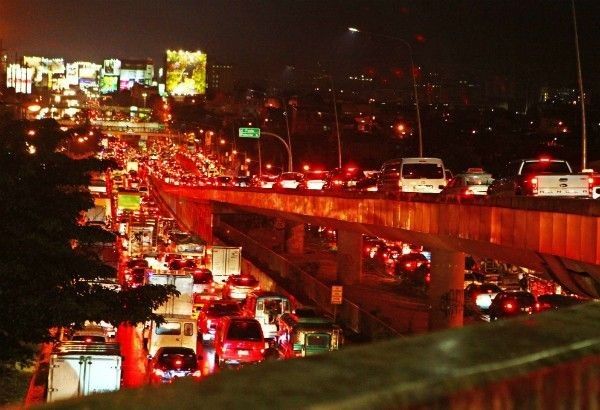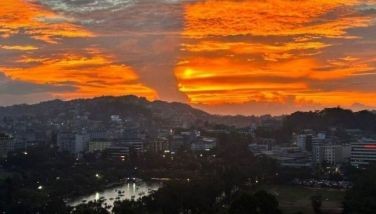What a 43-year-old forecast got right about Metro Manila's present problems

MANILA, Philippines — Urban planning expert Felino "Jun" Palafox Jr. blamed "too much politics" and lack of continuity and institutional memory as reasons behind Metro Manila's "catastrophic" traffic in an October 14 interview over ANC's "Early Edition.”
"We said that time that [because of] the 'do-nothing' scenario, we will have catastrophic traffic, flooding, [unpreparedness] for disasters, lack of decent housing, garbage problem[s], water supply crisis, power, and so on," Palafox said.
He was referring to the World Bank-funded Metro Manila Development Planning Project in 1976, where he served as senior planner and team leader for development planning. According to Palafox, many recommendations had already been put forward at the time and have still not been sufficiently acted upon today.
Worsening conditions: How held back are we?
Although many of the Urban Development Project’s initiatives centered around slum upgrading service projects including the Tondo Foreshore and Dagat-Dagatan Projects, it also acknowledged a number of infrastructure issues Manila faces today.
The World Bank's 122-page document said that "[Metro Manila's] most pressing problems relate to shelter, health and nutrition, urban transport and institutional capabilities." After almost half a century, these are still among the country’s most pressing problems.
As early as 1976, the World Bank already identified the metro's traffic congestion problem, which has since deteriorated into a full-blown crisis today, numerous transport and workers groups say.
The urban planner in the same interview revealed a troubling statistic: "[I]f you have 40 years of economic life with the five to six hours a day [of commuting,] you would have wasted 28,000 to 40,000 hours,” Palafox said.
“That's at least nine to fifteen years taken from your life."
Similarly, the Japan International Cooperation Agency said in a 2018 study that traffic now costs the Philippines P3.5 billion in "lost opportunities" daily. The amount is expected to triple in number by the year 2030.
On the subject of traffic, the World Bank looked to provide investment for a number of improvements including road markings, footpaths and bus shelters, and priority lanes for buses and jeepneys. Sen. Francis Pangilinan's proposed "Magna Carta of Dignified Commuting" filed on July 24 of this year pushes for declaring these same things a matter of state policy: adequate transportation services and functional mobility infrastructure, representation in decision making among other provisions.
Water woes
“A major problem in constructing sewer systems in the Philippines is that satisfactory pipes are not available,” the report read.
The now-closed Manila Water Supply Project noted in 1978 that “[t]he major risk associated with this project relates to the ability of [Metropolitan Waterworks and Sewerage System] to improve its capacity to construct and operate a much larger water supply system.”
Republic Act No. 9275, or the Philippine Clean Water Act of 2004, compelled Manila Water, Maynilad, and MWSS “to connect the existing sewage line found in all [structures] to available sewerage system[s]” within five years of its passage.
The Supreme Court in August 2019 ruled the three were guilty of violating this section as this requirement was not met by 2009.
"If the concessionaires were to compress into five years as the SC ruling wants what was planned as a 40-year project, the hundreds of billions of pesos required would lead to an increase in the water bill of subscribers, leaving them less money for other necessities and triggering higher inflation," Manila Water said in a statement.
According to Manila Water, if they were to dig up roads to conform to the law, the traffic situation would in turn only be worsened.
Healthcare upgrades
Another area highlighted by the World Bank in the 1970s was healthcare.
“Nearly all the government clinics need some degree of physical upgrading, such as improvement in sewerage and water connections, repairs to walls, roofs and, in one case, reconstruction,” the report said.
Today, groups are calling the public healthcare situation in the country a crisis of its own with many bemoaning the system’s pronounced underfunding. The Philippine General Hospital in Manila, for example, suffered a budget cut of P2.77 billion for 2020 from a P3.23 billion allocation the year before.
"The proposed 2020 budget of the PGH will harm its patients. Not only must the cuts be restored, its budget must be increased," Senator Ralph Recto argued in a statement. "The PGH is often the first option and the last resort of the poor and the middle class to get the best medical treatment, so any cut on its budget hurts the deepest.”
In the Philippines, the health worker-to-person ratio stands at only 19 per 10,000, massively below the World Health Organization recommendation of at least be 45 health workers for every 10,000 persons.
The country also has the outbreak of infectious diseases and growing distrust in vaccines to reckon with. These issues come as the Department of Health prepares for the implementation of the Universal Health Care law in 2020.
Other predictions
"[Metropolitan Manila] is also trying to promote decentralization in urban growth by developing small and medium-sized cities in addition to channeling resources into the MMA," the report said.
Today, Metro Manila is the fourth most populous urban area in the world according to 2019 population estimates by Demographia.
Speaking of population, the World Bank document also approximated around “40,000 new families being added annually” and correctly predicted the population boom the archipelago would experience at the turn of the century, foreseeing that the population would hit 77 million by the year 2000.
Indeed, the populace numbered at nearly a full million higher than this at 77.99 million people according to a census conducted that same year. "The Philippines will continue to feel the impact of population growth and urbanization in the next two or three decades," World Bank warned.
The current population of the Philippines is 108,558,991 as of October 20, based on a Worldometers elaboration of United Nations data. According to Worldometers, the count is good for 1.4% of the total world population.
Band-aid solutions and institutional memory
Aimed at fast-tracking infrastructure development and ushering in a “golden age of infrastructure,” Duterte’s Build, Build, Build scheme was one of the central pillars of his campaign into office.
During his interview, Palafox admitted that some of the same recommendations from the World Bank-funded project only began to take shape under the Duterte administration, particularly the Circumferential Road 6 and the Metro Manila Subway.
However, he was careful to warn that some of these were only band-aid solutions and would not cause long-term change. "I think all of these recommendations will alleviate the situation but it will not solve the problem [because] traffic management is not enough," Palafox asserted of the proposed solutions to congestion.
"How do you manage lack of roads [and] lack of transport? We start with urban planning and land use, because land use is the demand side of traffic."
Even this was loosely acknowledged by the World Bank. In a section on the relocation of squatters, they wrote, “the Government's main response to the problems of slum and squatter areas has been a series of ad hoc projects [which] have not been successful.”
Plans and plans
Before the Duterte administration’s "Build, Build, Build" program, there also existed JICA’s Roadmap for Transport Infrastructure Development for Metro Manila and Its Surrounding Areas, dubbed the Metro Manila Dream Plan which looked to provide solutions for traffic congestion, land use, and environmental risks. It was adopted by the Benigno Aquino III-chaired NEDA until 2030.
However, only five of the short-term project’s plans were successfully completed, while many of them were repurposed as part of the package for Build, Build, Build, whose projects include ideas dating back to the administrations of Ramos, Arroyo and Aquino.
"I think too much politics, lack of continuity and institutional memory [caused the traffic problem] because [administrations] ignore previous planning initiatives and so on,” Palafox said.
“[It’s] short term and opportunistic, not long term and visionary."
- Latest
- Trending






























